When Discussing the Twin Paradox: Read This First
This article is intended for anyone who wants to start a thread here at Physics Forums on the twin paradox. There are already many, many threads here on this topic, and they tend to cover the same ground over and over again, so it seems useful to put a description of that ground into an article that everyone can read before starting yet another thread. If you are in that category, and what is here answers your question, great! But even if it doesn’t, hopefully, this article will help you to frame whatever questions you still have after reading it, in a way that will help you to get better responses without repeating things that have already been said here many times before.
Having said that, the first thing we will do is shamelessly borrow an already existing article on the twin paradox, the one that is part of the Usenet Physics FAQ. Before you go any further, please read the all pages. It’s not long.
A quick summary of the above article is that there are a number of different ways of analyzing the standard twin paradox scenario, described in the article, each of which gives some insight. I’ll briefly list the ways described in the Usenet article here:
- The Doppler Shift Analysis.
- The Spacetime Diagram Analysis.
- The Equivalence Principle Analysis.
There are also other suggested ways of analyzing the standard twin paradox that we often find mentioned in threads here, and which appear in various sources, such as:
- Changing Inertial Frames.
- Acceleration.
- The Traveling Twin’s Rest Frame.
- Spacetime Geometry.
We’re not going to go into great detail about any of these here since the purpose of this article is not to give a detailed study of all the possible ways of looking at the twin paradox. Our purpose here is more general. The various analyses, generally speaking, can be classified by how well they answer three general questions:
- (Q1) If the twins have aged differently when they come back together, there must have been some difference or asymmetry between them during the trip. But doesn’t relativity says that all frames are equally valid? How does the method of analysis deal with this?
- (Q2) How much additional analysis or inference must be done, beyond what is given in the problem statement, in order to completely analyze the scenario using the given method?
- (Q3) Given an analysis of the standard twin paradox scenario, how well will that same method of analysis generalize to other scenarios? For example, will it work if both twins accelerate? Will it work if gravity is present (i.e., in curved spacetime)?
And now we get to the main point of this article: from the standpoint of these questions, there is only one method of analysis that can give a satisfactory response in all cases. That is the Spacetime Geometry analysis, which is a generalization of the Spacetime Diagram analysis described in the Usenet article. That article states that the Spacetime Diagram analysis is a sort of “Universal Interlingua” that lets you take a global view and put each of the analyses in its proper perspective. The Spacetime Geometry analysis is the same thing, but generalized to cases where it is not feasible to draw a simple diagram of the scenario and one has to rely on equations instead. But the basic point is the same as in the Spacetime Diagram analysis: you have two twins who take different paths through spacetime, and those paths have different lengths, and the lengths of the paths are the amounts that each twin ages during the trip. So the different ages of the twins when they meet again are no more mysterious than the fact that, if two twins take road trips between, say, New York and Los Angeles by different routes with different lengths, their odometers will read different mileages when they meet at the end even if they were the same at the start.
Let’s take a look at how the Spacetime Geometry analysis responds to our three questions above, and contrast it with some of the other analyses:
(A1) The asymmetry between the twins is simple: it’s the different lengths of their paths through spacetime. Those path lengths are invariants; they don’t depend on which frame you adopt. So both twins will agree on them. The two twins, if they use different frames, might differ in the details of how they calculate these invariants, but if their frames are valid, they will get the same final answers. (The calculation done in the Spacetime Diagram Analysis page of the Usenet article is an example of calculating the paths and path lengths of the twins, using the stay-at-home twin’s rest frame.)
Other analyses can be viewed as rules of thumb for spotting when the path lengths of the twins through spacetime will differ. For example, if, as in the standard scenario, spacetime is flat and one twin remains inertial the whole time while the other has nonzero proper acceleration when they turn around, the inertial twin’s path will be longer, so Acceleration works here as an asymmetry to explain the difference in aging. But that rule of thumb only works in flat spacetime, and only when one twin is inertial and the other isn’t; it doesn’t generalize. Nor do the rules of thumb involved in any of the other analyses (except for the Doppler Shift analysis, which will always work but which requires additional work over and above the Spacetime Geometry analysis–see A2 below). As we’ll see under A3 below, all of them break down at some point. Only the Spacetime Geometry analysis never does.
(A2) In order to apply the Spacetime Geometry analysis, you have to know the paths of the twins through spacetime. But if the scenario is well specified at all, it will include specifications that are sufficient to calculate those paths–if it doesn’t, you can’t solve it by any method of analysis (unless you are lucky enough to hit a special case where a rule of thumb like Acceleration works–but even then, without enough information to calculate the paths, you won’t be able to give a numerical answer, just a qualitative judgment of which twin ages more). And once you have the paths, calculating their lengths is straightforward (though it might involve tedious computation for more complicated scenarios), and would probably need to be done anyway no matter what method of analysis you are using.
For example, to even use the Doppler Shift Analysis, you need to know what the Doppler shifts are–and the only way to know that is to know the twins’ paths through spacetime so you can in turn calculate the paths of the light signals that they send to each other. (Note that the Usenet article glosses over this by just giving you the results of that calculation–but if you didn’t already know those results, you would have to calculate them.)
(A3) As has already been noted, the Spacetime Geometry analysis is the only one that generalizes to all scenarios. As we saw under A1 above, if the scenario is well enough specified at all, it must contain enough information to calculate the paths of the twins through spacetime. And that’s all you need for this analysis. Plus, as we saw above, this analysis works in any frame, since it is calculating invariants, so you don’t have to worry about whether the frame you are using is the “right” one. You just pick the one that works the best for you.
For any other analysis, you first would need to check to make sure it works at all for the scenario (since all of them have limitations in what kinds of scenarios they work in). Even if it did, unless the scenario was one of the simplest special cases (like the standard scenario with the Acceleration analysis, discussed above), you would need to do all the work you would do for the Spacetime Geometry analysis, plus additional work to assess whatever your chosen analysis tells you to assess (like Doppler Shift, as above). You might also be restricted in what frames you can use (for example, if your chosen method insists on using inertial frames), or might have ambiguities in how to even define a frame (for example, there is no unique way to define a “rest frame” for the traveling twin in the standard scenario, regardless of how you specify their proper acceleration).
In short: if you are looking at a particularly special case, such as the standard scenario described in the Usenet article, there are probably multiple analyses that will “resolve” the paradox in one way or another. But for any analysis other than the Spacetime Diagram/Spacetime Geometry analysis, sooner or later you will encounter a case that that analysis can’t resolve. And even before that, you will likely end up doing more and harder work than you needed to. The only fully general way to resolve all such scenarios, and do it as efficiently as possible, is Spacetime Geometry.
- Completed Educational Background: MIT Master’s
- Favorite Area of Science: Relativity

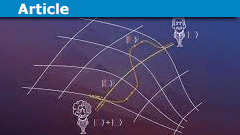
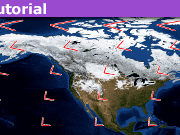
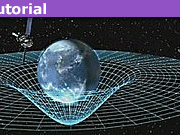
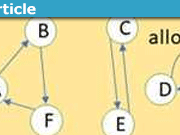

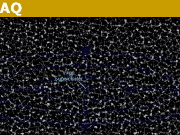
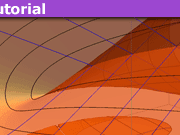


Leave a Reply
Want to join the discussion?Feel free to contribute!